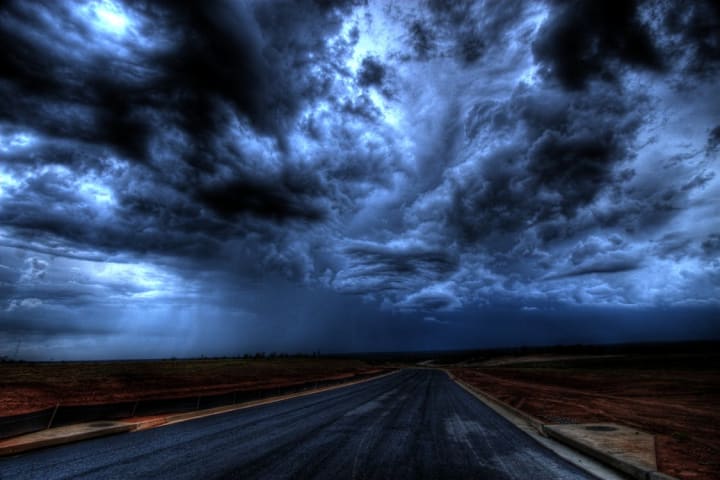The events of the dark ages
During the Dark Ages, people faced death in various ways.

The Dark Ages refers to a historical period that occurred in Western Europe during the Middle Ages, following the fall of the Western Roman Empire. This era was characterized by a significant decline in intellectual, scientific, and artistic activities, resulting in a period of cultural stagnation.
During the Dark Ages, there was a decline in trade, education, and knowledge in general. Most people lived in isolated farming villages, and access to information and learning was limited. Feudalism was also established in this period, with society being organized around feudal lords and their vassals, rather than a strong centralized government.
However, it is important to note that the traditional view of the Dark Ages as a period completely devoid of progress is widely disputed by historians. Although there was a decline in certain aspects of culture and knowledge, many significant advances occurred during this period in areas such as agriculture, architecture, and science.
Some notable events of the Dark Age include:
Fall of the Western Roman Empire (476 AD): The collapse of the Western Roman Empire marked the beginning of this period and resulted in political fragmentation in Europe.
Barbarian Invasions: Several barbarian tribes, such as the Visigoths, Ostrogoths, Vandals, and Franks, invaded the Western Roman Empire, contributing to its collapse and establishing barbarian kingdoms in the region.
Expansion of Christianity: Christianity became the dominant religion in Europe during this period, and the Catholic Church played a crucial role in preserving knowledge and promoting education.
Carolingian Renaissance: At the end of the Dark Ages, the Carolingian Empire under Charlemagne promoted a cultural and educational renaissance, encouraging the preservation and copying of ancient texts.
Crusades: During the 11th and 13th centuries, the Crusades took place, a series of military expeditions organized by the Catholic Church with the aim of retaking the Holy Land from the Muslims. These campaigns had a significant impact on cultural and commercial interactions between the West and the East.
These are just some of the major events of the Dark Ages. While it was a challenging period in many ways, there were also moments of progress and change that set the stage for the Renaissance and the subsequent flowering of culture and science in Europe.
Death in the Dark Ages

During the Dark Age, death was an inevitable and common part of daily life. Living conditions were difficult and people faced numerous challenges that could lead to premature death.
Mortality rates were high due to various reasons, including disease, famine, war, and poor living conditions. Epidemics were frequent and could cause large population losses. The Black Death, which occurred in the 14th century, was one of the most devastating pandemics in history and resulted in the deaths of millions of people in Europe.
People also faced constant dangers in their daily lives. The lack of proper hygiene and sanitation contributed to the spread of disease, and medicine at the time was limited, making it difficult to treat illnesses. In addition, violence and warfare were common, resulting in deaths caused by territorial conflicts, disputes between feudal lords, and invasions by barbarian peoples. Life expectancy was significantly lower than in modern times. Difficult living conditions, lack of access to adequate medical care, and constant dangers contributed to high mortality in all age groups.
However, it is important to note that not all people lived in constant danger of death. Most people lived in isolated rural communities where life could be more stable and safe. Death was a natural part of life and was often accepted as part of the cycle of human existence. Despite the difficulties and challenges faced by people in the Dark Ages, it is important to recognize that there were also moments of resilience, solidarity, and overcoming. The period contributed to the development of institutions and ideas that shaped the future and set the stage for the cultural and scientific renaissance that followed.
During the Dark Ages, people faced death in various ways. Mourning and funeral rituals played an important role in society, with practices varying according to region and culture. When someone passed away, the community would gather to pay their respects and offer support to the bereaved family. Bodies were prepared for burial according to local and religious customs. In many cases a wake would take place, where relatives and friends would gather to say goodbye to the deceased and offer comfort to the family.
Burials usually took place in cemeteries near churches or monasteries. People were buried in individual graves or in mass graves, depending on the circumstances and resources available. In some cases, more prominent or wealthy people were buried in more elaborate graves or mausoleums.
Religious beliefs played an important role in attitudes toward death. The Catholic Church was the dominant institution in Europe during this period, and the Christian faith shaped funeral practices. Life after death was believed to be a reality, and the prayers and rituals performed during funerals were intended to help the soul of the deceased find peace and salvation.
In addition, death was often depicted in the arts and literature of the time. Paintings, sculptures, and religious texts represented death as an inevitable part of life and as a reminder of the transience of earthly existence. Although death was a constant presence in people's lives during the Dark Ages, it is also important to note that death was not the only aspect of existence. People continued to live their lives, working, caring for their families, and seeking joy and meaning in the midst of hardship. Death was seen as an integral part of the human experience, and communities sought to find solace and meaning in religious beliefs and togetherness in times of loss.
About the Creator
Ricardo de Moura Pereira
I love to read writing and watch many documentaries in history, to have more knowledge in all science.
I work with digital marketing, and create articles for newspapers and marketing content.
Reader insights
Outstanding
Excellent work. Looking forward to reading more!
Top insights
Compelling and original writing
Creative use of language & vocab
Easy to read and follow
Well-structured & engaging content
Excellent storytelling
Original narrative & well developed characters
Expert insights and opinions
Arguments were carefully researched and presented
Eye opening
Niche topic & fresh perspectives
Masterful proofreading
Zero grammar & spelling mistakes
On-point and relevant
Writing reflected the title & theme






Comments (3)
A wealth of educational information and wonderfully written!!! 💖💖💕
Great work bro👏🔥
This was an interesting and educational read. Thank you, Ricardo!